Highlighting on light brown hair: types and technique of execution

Light brown hair is sometimes called "mouse" for its ordinariness and inexpressiveness. But professional hairdressers are happy to "take to work" such hair, since light brown is a wide field for activity. One of the staining options is highlighting.

Peculiarities
Highlighting is a special dyeing technique, during which individual strands are highlighted with a certain color. The first master to use this technique was Jacques Dessange. Classic highlighting involves highlighting the strand. However, today there are many subspecies of highlighting, up to the bright and extraordinary.
This technique helps to give the hair a versatility and complexity, but at the same time adds a natural look.
The choice of a particular technique and color depends on a number of factors.

Curl health
If it is difficult to call them strong and healthy, it is better to abandon the classic frequent highlighting, and focus on zonal.

Natural color
The streaked strands should be combined with the natural hair color. In addition, trying to bleach dark blond hair too much, you risk getting unkempt yellow-red "stripes", and not a fashionable image.
On dark blond hair, red, golden, nutty locks look good. On a lighter light brown tone - root clarification.

Length, hairstyle features
Sophisticated highlighting techniques work well for structured, layered haircuts. If you do not like graduated hairstyles, then it is better to choose a more modest highlight.

Advantages and disadvantages
Fair-haired young ladies usually cannot boast of lush hair and dense hair. And highlighting allows you to solve this problem - visually add volume, density to curls.
However, highlighting looks good on hair of any length and type, suitable for most hairstyles. Such coloring also copes with gray strands, masking them. The "pluses" of this staining technique do not end there.
It is optimal for those who do not want to severely spoil the curls with paint. Selective strands are dyed, the hair roots are not affected. Simply put, highlighting is classified as a gentle technique, it does not greatly harm the hair, and therefore is suitable even for dry and brittle hair.


Highlighting is also loved by those women who strive for a natural look. The coloring looks as natural as possible - as if individual strands are slightly darker or lighter than the rest of the head of hair. They flicker beautifully in the mass and glare under different lighting conditions.
Thanks to the special technology of applying paint, there is no clear boundary between your own and colored hair. This means that as they grow back, they will not look unkempt. You can not visit the master every 2-3 weeks (as soon as regrowth roots appear), but do it only once every 1.5-2 months.
By highlighting the strands in the face area, you can give the image friendliness, openness. It is no coincidence that image makers and brand specialists recommend such hairstyles to those who work with people. Coloring alone can make the image of a professional more friendly and inviting.
By adding and alternating light and dark strands, you can correct the shape of the head, hide facial defects and, on the contrary, emphasize the dignity.

However, all these advantages are fully manifested only if the staining is done by a professional. Otherwise, instead of a natural and elegant hairstyle, you risk getting rough and tasteless "streaks" on your hair. This is one of the "disadvantages" of highlighting - it is difficult, perhaps impossible to do on your own.
Varieties
There are several types of highlights. Let's consider the most famous and popular techniques.
Classic
It is also called frequent. The essence of coloring is that very thin strands are taken and lightened along the entire length. Usually 2 shades are used (sometimes 3-4), mainly it is golden or platinum blond, wheat, honey, coffee with milk. That is why the effect of beautiful naturally blond hair is obtained. However, such beauty is hand-made and created by professional colorists.
The most famous fan of this technique is Jennifer Aniston.



Classic highlighting can have a zonal character. It is used if the hair is badly damaged. In this case, only the strands of the top layer of the hair are colored.
French
The most gentle highlighting option thanks to non-aggressive, ammonia-free dyes. Naturally, such paint will "take" only light strands. That is why French highlighting is possible only on wheat, light blond hair.
Colorists usually choose 2-3 shades. The result is hair, as if with locks burnt out in the sun. The latter add volume and shine to the hairstyle. The image is refined and well-groomed.




Partial
Coloring is done by zones, and therefore the second name is zonal (another name is surface). It implies lightening the strand around the face, in the occipital zone, which is combined with lightening the tips. Coloring in this technique looks most impressive on short haircuts.
If we talk about the intricacies of the technology, then it should be noted that the use of a special dye - mazhimesh is mandatory. It is produced by many brands and contains natural wax. Despite the powerful capabilities of the product, it is considered one of the most delicate.


Brazilian-French
This method cannot be called fully highlighting. The fact is that at first the strands are completely lightened, and then painted in 2-3 shades. The result is a kind of imitation of highlighting.
The method is good because you can achieve the desired hair color, regardless of natural data. However, the technique is only suitable for healthy hair that is able to withstand preliminary bleaching.

California
The entire mass of hair is subjected to color stretch from darker (light brown) roots to light (sometimes almost blond) ends. Californian highlighting is very close to the ombre technique (the mentioned stretching of the color through 3-4 tones), but unlike the latter, it does not have clear boundaries between tones and halftones.
The California technique helps to achieve naturalness, since its result is hair that looks like sunburned. This can be seen on hair after resting in the south, when not individual strands fade, but the entire mass of hair closer to the ends.

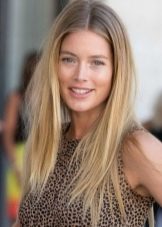


Californian highlights are suitable for both light and dark blonde hair. It is better if they are of medium and below average length. The most advantageous option is long hair, color stretch looks especially impressive on them.
Venetian
As a rule, this technique is used on dark blond hair, adding amber or cognac strands to the head of hair. Sometimes this type of highlighting is also called amber. To understand what is at stake, it is enough to recall the image of the famous Jennifer Lopez.
The Venetian technique gives the same effect to sun-bleached hair, but on darker hair. Amber, cognac, coffee shades are added to dark blond hair. If the skin color is warm, then it can be caramel, honey colors.
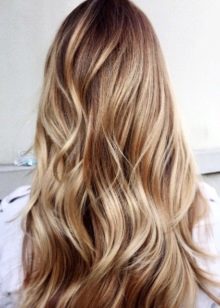
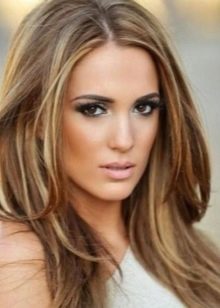

Ombre
With this type of coloring, the hair is not exposed to the pigment along the entire length, but only along the horizontal line. Conditionally, the hair is divided into 2 parts, and the highlighting begins from the middle of the hair length or slightly below. The tips are exposed to the greatest clarification. And the result of the procedure is smooth stretch of color from darker (roots) to lighter (tips). The ombre looks especially advantageous on dark and medium-length hair below the shoulders.
Colorists recommend choosing shades that are 2-3 tones lighter than the natural hair color.
Ombre can be quite avant-garde too. In this case, staining is done in bright shades.



Balayazh
Another gentle highlighting technique in which the ends of the hair are lightened. The coloring composition is applied to the tips as if with strokes, and the border between the unpainted roots and the lightened tips is quite pronounced (on average, it is 6-8 tones).



Shatush
The technique is similar to the previous one. However, the shatusha is characterized by a vertical stretch of color. As in the case of the balayage technique, with shatushe do not affect the hair roots.


Coloring
When choosing this type of highlighting, the master works with only two colors, however, he is not limited in the choice of subtones. Coloring usually implies the contrast of the strands, due to which it is possible to achieve brightness and originality of the appearance.


How to choose a color?
Choose a color scheme based on the natural shade of the hair. If the curls are darker, then brown and golden shades look good on them (top row in the photo). These can be shades such as cognac, honey, wheat, amber.
For lighter blond hair, it is better to select highlighting in white tones (bottom row in the photo). The colors of ivory, milky, platinum, cream will be especially successful. Strands in the color of caramel or cappuccino look no less impressive.
And if you want to get a more daring look, choose cold ash, silver. For an extravagant and memorable look, you can choose blue, crimson, green or other bright shades.
Complex colors look good on graduated complex haircuts (cascade, for example), on various avant-garde hairstyles, asymmetrical long bangs.

It is important to consider the color type as a whole. So, for tanned beauties it is better to choose not cold blondes, but caramel, sunny shades. At the same time, it is better for women of a cold color type to avoid warm strands. This can make their face look unhealthy.
Choice of paint
When choosing a paint, you need to take into account the desired result, the natural hair color and their condition. In general, for dark blond curls, a clarifier of 9-12% is chosen. Medium-brown, close to light, hair should be highlighted using 6-8% clarifier. For very light blond hair, do not use a clarifier that is more aggressive than 3%.

In any case, it is recommended to test one strand of hair first. This will allow you to accurately determine the dye, establish the optimal time for its contact with the curls and avoid violations of the hair structure.
Today, you can find special highlighting kits on sale. As a rule, they include everything you need - a hat, gloves, a dye composition, a brush for application and a balm for maintaining and fixing the color. Kits are usually more expensive than "plain" paint. However, if reviews are to be believed, this difference in price is fully paid for by the ease of application and ease of use of the kits.

Dyeing technology
There are several color options.
Using a hat
A special hat with many small holes is put on the head. Strands will have to be pulled through these holes. For this, it is convenient to use wooden sticks (for example, skewers) or a regular crochet hook. You can drag a strand into each hole (option for frequent highlighting) or skip some holes (for a more natural result). By the way, it is more convenient to start from the temporal zone, and finish "getting" the lock in the occipital zone.
Then that part of the hair that turned out to be outside is painted with a dye composition and left on the hair for 15-30 minutes. The next step is to remove the paint, wash your hair and apply a moisturizing balm to all hair (the cap must be removed).

This method is suitable for short hair. In principle, using this method, you can sweep your hair yourself at home.
Foil use
A method invented by American hairdressers. Perhaps all professional hairdressers highlight their hair this way.
The bottom line is to divide the hair into zones, and then into small strands. You should start from the parietal part. Part of the hair should be separated by means of the long leg of the comb, and then the smaller strand should be isolated from the rest of the hair. A strip of foil, on which an insulated strand is laid, helps to achieve this.
Using a brush, a brightening composition is applied. The first application should be such that the strand adheres to the foil. Then the composition is evenly applied over the entire length of the hair. It is important to lay the foil as close to the roots as possible, and then paint over this area carefully.
Next, the strip of foil (along with the hair in it) is folded in half, then the side parts are bent (the hair appears to be packed). You can fold it in half again. The result should be something that looks like an envelope.
Hair wrapped in foil is folded up, and the strands under the "envelope" are processed in the same way. It is convenient to move from the back of the head to the crown, and then dye the side strands.


Outdoor highlighting with a comb
This technology is quite simple to implement and allows you to update your hairstyle, giving your hair a slight effect of natural burning of strands in the sun.
To apply the coloring composition, not a brush is used, but a special brush with sparse teeth arranged in 3 rows.
The composition is applied to a brush and carried through the hair from the middle to the ends.It is better to do this in strands, avoiding deliberate symmetry. After that, the paint is left for a certain amount of time, and then washed off with water.


The following methods cannot be called highlighting techniques in the usual sense of the term, but they allow you to get a fashionable coloration.
So, you can get an ombre at home by collecting your hair in ponytails. The hanging part of the hair (after the elastic) is painted with the composition and left for 15-40 minutes. Coloring is carried out in the open air.

Frequent highlights can be done using a wide-toothed comb. A coloring composition is applied to them and the hair is carefully combed (by strands).
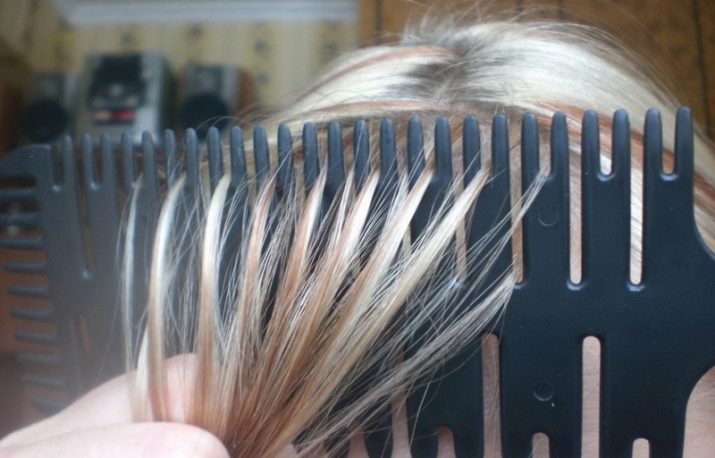
To obtain a Californian highlight, a strong root bouffant is made, and paint is applied to the remaining part. This way it is possible to achieve a beautiful and smooth transition from natural roots to light ends.
The exposure time of the dye depends on the original hair color and highlighting technique. On blonde hair and thin strands, it is enough to apply the paint for 10-15 minutes. For dark blond shades and thick strands, contact with the dye may be required for 30-40 minutes.



Regardless of the technique chosen, it is important to observe the following rules:
- do not apply the composition to henna-dyed hair;
- if there are wounds and abrasions on the scalp, then first heal them, and then proceed to highlighting.
- do not highlight hair immediately after a perm.

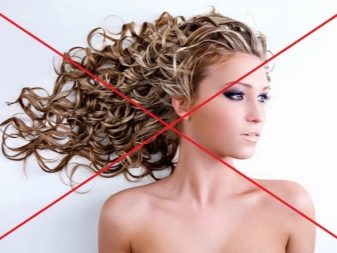
It is important to understand that coloring is a whole science, and home highlighting may not always be successful.
Care
Highlighted hair care comes down to two tasks:
- keep the color and the result of staining longer;
- protect hair from dryness, tangling.

The first couple of days after highlighting it is better not to wash or wet your hair. Allow the pigment to adhere better to the hair structure. Moreover, you need to refrain from visiting the pools and baths.
From the first day of staining, you should include nourishing balms and masks in your list of care products.
But the restoring compounds should be abandoned. The fact is that, striving to restore hair, they begin to consider the coloring pigments "enemies" and rapidly remove them. In other words, they fight for the health of hair by washing out the dye. As a result, the staining lasts less.
It is good to apply regenerating shampoos and masks before visiting the hairdresser to prepare the hair for various manipulations.


Despite the fact that this type of coloring is considered one of the most gentle coloring, streaked hair is still injured. The use of moisturizing balms after each wash will help to save the strands from dryness.
Immediately after the highlighting procedure, it is better to cut off the split ends. If you value hair length, opt for a hair polish procedure.
When using hair dryers, hairpads and irons, do not forget about thermal protection. Do not apply such products, and then immediately grab the tongs or irons. Hair must be completely dry when using these tools.
In the first few days after dyeing, you should limit the high-temperature effect on the hair - limit the use of a hair dryer and irons, do not expose your hair to active sun exposure. Now the strands are already experiencing a moisture deficit.


Natural cosmetic oils help to restore hair. They are applied to the ends of the hair half an hour before washing. It is important to use products made for hair. The use of household oils, or those prepared with your own hands, can cause an undesirable change in the shade of the streaked strands (hair turns yellow or green).
Special shampoos, balms and foams for blondes help to preserve the beautiful shade of the streaked strand and avoid the appearance of yellowness. It is important to choose the optimal exposure time for these formulations. If you overexpose them on your hair, the hair will take on a purple hue. At the first application, it is recommended to test the intensity and time of exposure of the tint composition on a single strand.
By the way, when dyeing dark blond hair, the color can turn out to be ugly, yellowish. In this case, they also resort to toning. It can be both paint and toning agent (foam, mask). There is no need to strive to apply the latter exclusively to the streaked strands. Feel free to use it all over your head, light brown strands simply will not stain, and streaked ones will get a noble undertone.
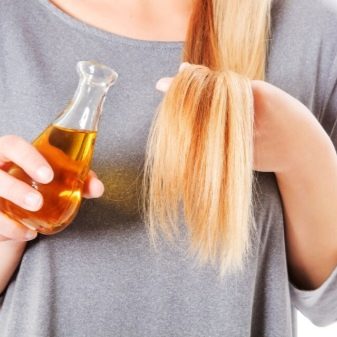

Successful examples
For short haircuts, it is better to choose the highlighting technique through a hat. If a complex technology is chosen, then with the help of foil. Highlighting outdoors, as well as complex color stretching, on hair down to the shoulders or below, simply does not have time to appear in all its glory.
3D coloring can be considered a good example for a square with an elongated asymmetric bangs. It gives the image brightness and originality. For a more relaxed look, you can choose the zonal coloring of the strands.

For medium-length hair, it is better to choose complex dyes (shatush, Venetian or French technique), combining them with graduated strands. From this, the image is light and feminine.

If your hair is long and healthy at the same time, then all types of highlights will look great. In the photo you can see ombre, as well as infrequent highlights in 2-3 tones. Looks natural and stylish.

Another option for successful highlighting. In the photo "before" - obviously regrown and slightly washed off blond. The image was saved by the classic frequent highlighting. Curls have acquired the luxury of blond shades, but at the same time they look natural and voluminous. Fashion trends just recommend women to leave the total blonde and choose more multifaceted shades with overflowing tones. It is important that the strands have undergone minimal harmful effects.

What could be more beautiful than healthy long hair in natural shades. But sometimes they look pretty boring and can be lacking in volume. Californian staining will come to the rescue. It seems that the fashion for him will never end. With this technique, the hair retains the showiness of natural shades, but at the same time the magic of overflow appears - some strands seem to have burned out in the sun. As with any type of highlighting, the American one adds volume to the hair.

If you need to add a little more volume or highlight facial features, contrast highlighting is recommended. Strands of various lengths are lightened, and the difference between their own and the streaked areas is quite noticeable. As you can see in the example, the technique looks most advantageous on dark blond hair.

For information on how to perform the highlighting technique on light brown hair, see the next video.








